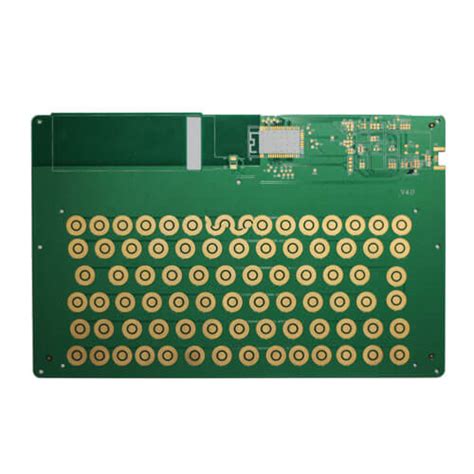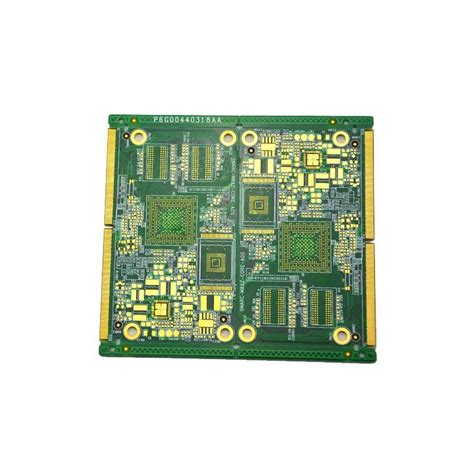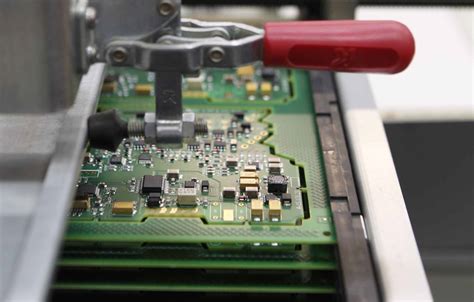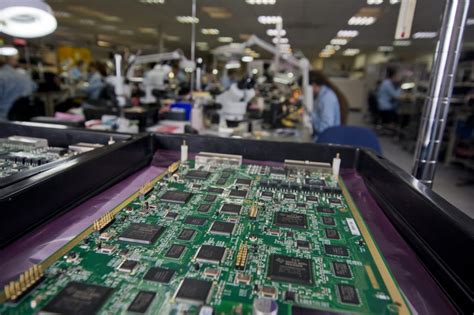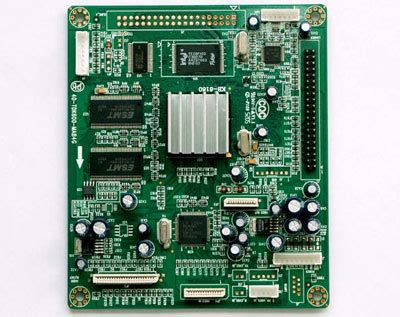Wave Soldering in PCB Assembly: Process, Advantages, and Challenges
Introduction to Wave Soldering
Wave soldering remains one of the most widely used soldering techniques in printed circuit board (PCB) assembly, particularly for through-hole components. Since its development in the 1950s, this automated process has become a cornerstone of electronics manufacturing, enabling high-volume production with consistent quality. Wave soldering involves passing PCBs over a molten solder wave that creates permanent electrical connections between component leads and PCB pads.
This article provides a comprehensive examination of wave soldering technology, covering its fundamental principles, process steps, equipment requirements, advantages over other soldering methods, common defects, and recent technological advancements. As electronic devices continue to proliferate across industries, understanding this critical manufacturing process becomes increasingly important for engineers, technicians, and procurement specialists in the electronics field.
The Wave Soldering Process
1. Preheating Stage
The wave soldering process begins with preheating the PCB assembly. This critical step serves multiple purposes:
- Thermal Preparation: Gradually raises the board temperature to prevent thermal shock when contacting molten solder
- Flux Activation: Heats the flux to its activation temperature, typically between 80-110°C
- Moisture Removal: Eliminates any moisture absorbed by the PCB or components
- Thermal Equalization: Reduces temperature differentials across the board
Modern wave soldering machines employ various preheating methods:
- Convection Heating: Uses forced hot air circulation
- Infrared (IR) Heating: Utilizes IR emitters for rapid heating
- Combination Systems: Merges convection and IR for optimal results
The preheat temperature profile must be carefully controlled, typically maintaining board temperatures between 90-110°C before entering the solder wave.
2. Flux Application
Flux plays several essential roles in wave soldering:
- Oxide Removal: Eliminates oxides from metal surfaces
- Surface Tension Reduction: Improves solder wettability
- Protection: Prevents re-oxidation during soldering
- Solder Flow Enhancement: Promotes proper solder flow into joints
Common flux application methods include:
- Foaming Flux: Compressed air creates a foam flux layer
- Spray Flux: Precision nozzles apply controlled flux amounts
- Selective Fluxing: Targets only required areas (for miniaturized boards)
Flux types vary by composition and activity level, with no-clean and water-soluble fluxes being most common in modern applications.
3. Soldering Stage
The core of the process involves passing the PCB over the molten solder wave. Key aspects include:
Solder Composition:
- Traditional tin-lead (Sn-Pb) alloys (e.g., Sn63/Pb37)
- Lead-free alternatives (e.g., SAC alloys – SnAgCu)
Wave Dynamics:
Modern systems often employ dual-wave configurations:
- Turbulent Wave: Breaks through surface oxides and provides initial solder deposition
- Laminar Wave: Creates smooth, controlled fillets and removes excess solder
Critical Parameters:
- Solder temperature (typically 250-260°C for lead-free)
- Contact time (2-5 seconds)
- Board conveyor angle (typically 5-7°)
- Wave height and dynamics
4. Cooling and Cleaning
Post-soldering steps include:
- Controlled Cooling: Prevents thermal stress in components and PCB
- Flux Residue Removal: For certain flux types, cleaning may be required
- Inspection: Visual or automated examination of solder joints

Equipment Configuration
Modern wave soldering systems comprise several integrated subsystems:
- Conveyor System:
- Precision speed control (typically 0.5-2.5 m/min)
- Adjustable rail width for different PCB sizes
- Stable, vibration-free transport mechanism
- Flux Application Unit:
- Foam generators or precision spray nozzles
- Flux level monitoring and control
- Containment and recovery systems
- Preheat Section:
- Multiple heating zones for gradual temperature rise
- IR panels or convection heaters
- Temperature profiling capability
- Solder Pot:
- Temperature-controlled molten solder reservoir
- Wave generation mechanism (pump, nozzles)
- Solder level monitoring and replenishment
- Dross removal systems
- Control System:
- Process parameter monitoring and recording
- Closed-loop control of critical variables
- User interface and recipe management.
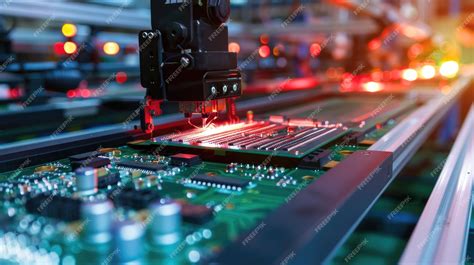
Advantages of Wave Soldering
Wave soldering offers several benefits that maintain its relevance in modern electronics manufacturing:
- High Throughput:
- Continuous process allows rapid assembly
- Typical speeds of 1-2 meters per minute
- Suitable for mass production environments
- Consistent Quality:
- Automated process reduces human variability
- Repeatable solder joint formation
- Established process control methodologies
- Cost Efficiency:
- Lower per-unit cost compared to manual soldering
- Reduced labor requirements
- Efficient solder usage (though some dross formation occurs)
- Material Flexibility:
- Accommodates various solder alloys
- Compatible with different flux types
- Handles diverse PCB materials and finishes
- Reliability:
- Proven technology with extensive industry experience
- Produces robust mechanical connections
- Suitable for high-reliability applications
Challenges and Common Defects
Despite its advantages, wave soldering presents several technical challenges:
- Thermal Management:
- Potential for component thermal damage
- Warping of large PCBs
- Uneven heating of complex assemblies
- Solder Defects:
Common quality issues include:
- Bridging: Unwanted solder connections between pins
- Icicles: Solder protrusions from joints
- Insufficient Fill: Incomplete joint formation
- Voiding: Gas pockets within solder joints
- Solder Balls: Small spheres of scattered solder
- Process Control Complexity:
- Numerous interacting variables
- Sensitivity to minor parameter changes
- Requires skilled technicians for optimization
- Dross Formation:
- Oxidation of molten solder surface
- Generates waste and requires frequent removal
- Can affect wave stability if excessive
- Component Limitations:
- Generally unsuitable for surface-mount devices (SMDs)
- Thermal sensitivity restricts component types
- Tall components may shadow others from solder wave

Process Optimization Strategies
Effective wave soldering requires careful parameter optimization:
- Temperature Profiling:
- Establish appropriate preheat gradients
- Optimize solder pot temperature
- Monitor board temperatures at critical points
- Conveyor Settings:
- Adjust speed for proper contact time
- Set optimal conveyor angle
- Ensure proper board support
- Wave Dynamics:
- Balance turbulent and laminar wave characteristics
- Control wave height and stability
- Maintain proper solder flow patterns
- Flux Management:
- Select appropriate flux type for application
- Control application quantity and uniformity
- Monitor flux activity and replenishment
- Solder Pot Maintenance:
- Regular dross removal
- Alloy composition monitoring
- Contamination prevention
Lead-Free Wave Soldering Considerations
The transition to lead-free soldering introduced new challenges:
- Higher Temperatures:
- Typical process temperatures increased by 20-30°C
- Greater thermal stress on components and PCBs
- Higher energy consumption
- Material Compatibility:
- More aggressive flux formulations required
- Component and PCB material limitations
- Increased copper dissolution rates
- Process Adjustments:
- Modified temperature profiles
- Different wetting characteristics
- Altered defect patterns
- Equipment Modifications:
- Enhanced heating capacity
- More corrosion-resistant materials
- Improved temperature control systems
Recent Technological Advancements
Wave soldering technology continues to evolve:
- Selective Wave Soldering:
- Targeted soldering of specific board areas
- Reduced thermal impact
- Enables mixed technology assemblies
- Advanced Fluxing Systems:
- Precision spray technologies
- Low-volume, high-efficiency application
- Environmentally friendly formulations
- Improved Solder Wave Dynamics:
- Enhanced wave shaping capabilities
- Multi-stage wave configurations
- Better stability controls
- Process Monitoring and Control:
- Real-time parameter tracking
- Automated feedback systems
- Advanced data analytics for process optimization
- Environmental and Safety Enhancements:
- Improved fume extraction
- Energy-efficient designs
- Waste reduction systems

Comparison with Alternative Soldering Methods
While surface mount technology (SMT) reflow dominates for SMDs, wave soldering maintains advantages for through-hole components:
- Vs. Hand Soldering:
- Superior consistency and speed
- Lower labor costs
- Better repeatability
- Vs. Reflow Soldering:
- Better for through-hole components
- Stronger mechanical connections
- Lower thermal gradient across assembly
- Vs. Selective Soldering:
- Higher throughput
- Simpler process control
- Lower equipment costs for high-volume production
Future Outlook
Wave soldering will likely remain relevant for:
- High-volume through-hole assembly
- Applications requiring robust mechanical connections
- Cost-sensitive mass production
- Mixed-technology PCB assemblies
Ongoing developments may focus on:
- Further process automation
- Enhanced environmental sustainability
- Improved compatibility with advanced PCB materials
- Integration with Industry 4.0 manufacturing systems
Conclusion
Wave soldering continues to be a vital PCB assembly technology nearly seven decades after its introduction. While surface mount technologies have reduced its dominance, wave soldering remains indispensable for through-hole component assembly in countless electronic products. Its combination of speed, reliability, and cost-effectiveness ensures its continued use in automotive, industrial, consumer, and other electronics sectors.
Understanding wave soldering principles, capabilities, and limitations enables manufacturers to make informed process decisions and maintain high-quality production standards. As electronic products evolve, wave soldering technology adapts through continuous improvements in process control, material science, and equipment design.
For engineers and technicians, mastering wave soldering technology provides valuable insights into one of electronics manufacturing’s most enduring and important processes. Proper implementation and optimization can yield significant improvements in product quality, manufacturing efficiency, and overall production economics.

